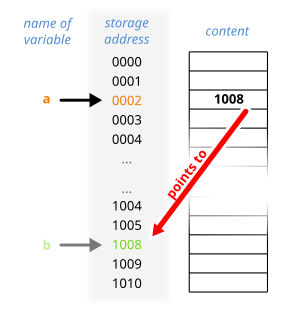Related Research Articles

C is a general-purpose computer programming language. It was created in the 1970s by Dennis Ritchie, and remains very widely used and influential. By design, C's features cleanly reflect the capabilities of the targeted CPUs. It has found lasting use in operating systems, device drivers, protocol stacks, though decreasingly for application software. C is commonly used on computer architectures that range from the largest supercomputers to the smallest microcontrollers and embedded systems.
The Cyclone programming language is intended to be a safe dialect of the C language. Cyclone is designed to avoid buffer overflows and other vulnerabilities that are possible in C programs, without losing the power and convenience of C as a tool for system programming.
Mary is a programming language designed and implemented by RUNIT at Trondheim, Norway in the 1970s. It borrowed many features from ALGOL 68 but was designed for systems programming.

Oberon is a general-purpose programming language first published in 1987 by Niklaus Wirth and the latest member of the Wirthian family of ALGOL-like languages. Oberon was the result of a concentrated effort to increase the power of Modula-2, the direct successor of Pascal, and simultaneously to reduce its complexity. Its principal new feature is the concept of type extension of record types. It permits constructing new data types on the basis of existing ones and to relate them, deviating from the dogma of strictly static typing of data. Type extension is Wirth's way of inheritance reflecting the viewpoint of the parent site. Oberon was developed as part of the implementation of an operating system, also named Oberon at ETH Zurich in Switzerland. The name is from the moon of the planet Uranus, named Oberon.

Pascal is an imperative and procedural programming language, designed by Niklaus Wirth as a small, efficient language intended to encourage good programming practices using structured programming and data structuring. It is named in honour of the French mathematician, philosopher and physicist Blaise Pascal.

Oberon-2 is an extension of the original Oberon programming language that adds limited reflection and object-oriented programming facilities, open arrays as pointer base types, read-only field export, and reintroduces the FOR loop from Modula-2.

The syntax of the C programming language is the set of rules governing writing of software in the C language. It is designed to allow for programs that are extremely terse, have a close relationship with the resulting object code, and yet provide relatively high-level data abstraction. C was the first widely successful high-level language for portable operating-system development.

In computer science, a pointer is an object in many programming languages that stores a memory address. This can be that of another value located in computer memory, or in some cases, that of memory-mapped computer hardware. A pointer references a location in memory, and obtaining the value stored at that location is known as dereferencing the pointer. As an analogy, a page number in a book's index could be considered a pointer to the corresponding page; dereferencing such a pointer would be done by flipping to the page with the given page number and reading the text found on that page. The actual format and content of a pointer variable is dependent on the underlying computer architecture.
In computer programming, run-time type information or run-time type identification (RTTI) is a feature of some programming languages that exposes information about an object's data type at runtime. Run-time type information may be available for all types or only to types that explicitly have it. Run-time type information is a specialization of a more general concept called type introspection.

ALGOL 68 is an imperative programming language that was conceived as a successor to the ALGOL 60 programming language, designed with the goal of a much wider scope of application and more rigorously defined syntax and semantics.
xHarbour is a free multi-platform extended Clipper compiler, offering multiple graphic terminals (GTs), including console drivers, GUIs, and hybrid console/GUIs. xHarbour is backward-compatible with Clipper and supports many language syntax extensions, greatly extended run-time libraries, and extensive third party support.
The computer programming languages C and Pascal have similar times of origin, influences, and purposes. Both were used to design their own compilers early in their lifetimes. The original Pascal definition appeared in 1969 and a first compiler in 1970. The first version of C appeared in 1972.
In computer programming, the term hooking covers a range of techniques used to alter or augment the behaviour of an operating system, of applications, or of other software components by intercepting function calls or messages or events passed between software components. Code that handles such intercepted function calls, events or messages is called a hook.
A class in C++ is a user-defined type or data structure declared with keyword class that has data and functions as its members whose access is governed by the three access specifiers private, protected or public. By default access to members of a C++ class is private. The private members are not accessible outside the class; they can be accessed only through methods of the class. The public members form an interface to the class and are accessible outside the class.
sizeof is a unary operator in the programming languages C and C++. It generates the storage size of an expression or a data type, measured in the number of char-sized units. Consequently, the construct sizeof (char) is guaranteed to be 1. The actual number of bits of type char is specified by the preprocessor macro CHAR_BIT, defined in the standard include file limits.h. On most modern computing platforms this is eight bits. The result of sizeof has an unsigned integer type that is usually denoted by size_t.
C++11 is a version of the ISO/IEC 14882 standard for the C++ programming language. C++11 replaced the prior version of the C++ standard, called C++03, and was later replaced by C++14. The name follows the tradition of naming language versions by the publication year of the specification, though it was formerly named C++0x because it was expected to be published before 2010.
In computer programming, the dereference operator or indirection operator, sometimes denoted by "*", is a unary operator found in C-like languages that include pointer variables. It operates on a pointer variable, and returns an l-value equivalent to the value at the pointer address. This is called "dereferencing" the pointer. For example, the C code
This article describes the syntax of the C# programming language. The features described are compatible with .NET Framework and Mono.
This article compares a large number of programming languages by tabulating their data types, their expression, statement, and declaration syntax, and some common operating-system interfaces.
In computer science, an array type is a data type that represents a collection of elements, each selected by one or more indices that can be computed at run time during program execution. Such a collection is usually called an array variable, array value, or simply array. By analogy with the mathematical concepts vector and matrix, array types with one and two indices are often called vector type and matrix type, respectively. More generally, a multidimensional array type can be called a tensor type.
References
- ↑ Krishna, Sundeep Sahay, Brian Nicholson, S. (2003). Global IT outsourcing : software development across borders . Cambridge: Cambridge University Press. p. 7. ISBN 978-0521816045.
- ↑ Telesis (3), 1989
{{citation}}: Missing or empty|title=(help) - 1 2 “Experience with a modular typed language: PROTEL”, ICSE '81 Proceedings of the 5th international conference on Software engineering
- ↑ Dini, P.; Boutaba, R.; Logrippo, L., eds. (1997). Feature interactions in telecommunications networks IV. Amsterdam: IOS Press. p. 23. ISBN 978-9051993479.